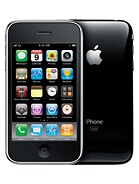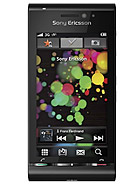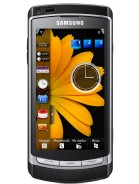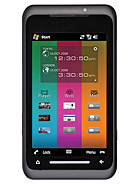HTC MAX 4G review: From Russia with love
From Russia with love
Tweaks & Modding
PocketPCs have long been the target of custom modding, patching and tweaking. HTC for one have an especially active fan base that seem to be constantly cooking ROMs and creating patches to optimize the usability of their device.
So, the HTC MAX 4G review would not be complete without mentioning some of the achievements on the user customization and modding scene.
First of all, it's the screen auto rotation limitations that HTC have imposed on the Touch HD. By default, screen auto rotation only works in the web browser, image gallery and video player.
The Gyrator app, which works on the Touch Diamond, the Touch Pro and the Touch HD equally well, enables the automatic screen rotation for the MAX 4G across almost all the interface with the exception of the Home screen.
An added bonus is that you can set specific system or app events to be triggered in response to the handset movement. For example, you can answer a call by simply picking up the handset.
You can find more about Gyrator and download the latest version over at its developer's website.
Most tweaks require modifying the Windows Mobile registry. However, in case you feel anxious about messing with the system registry, you can find most of the currently available tweaks among the options of the third-party Advanced Configuration Tool (or simply the Advanced Config).
The Advanced Config is a tweaking app which allows you to fine-tune a lot of settings.
For instance, you can replace the battery in the taskbar with a clock, change splash screens, and change some performance related settings. You can learn more about it and download it here.
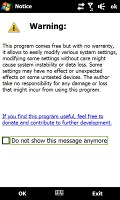



The Advanced Configuration Tool offers a number of possibilities to make your device suit your needs
With a simple registry tweak we also managed to activate the geotagging feature of the MAX 4G camera. It allows saving the location information in the EXIF file of the image. It is very strange why HTC decided to deactivate this feature even if the hardware and the software support it. By the way, along with the geo-tagging we activated some other extra camera features like Burst and Sports modes and the Video Share and MMS Video features.


Here are the features we enabled using the Registry Editor application
In Burst mode you can take a sequence of 30 images at a time and in Sports mode - 5. The Video Share and the MMS Video options allow you to send automatically the videos you take via email or MMS.
All these and many more features can be activated or deactivated using the Registry Editor application, which is totally free, but as usual when messing with the registry always act cautiously and don't touch entries that you don't understand.
Here's a quick link that describes the WM registry entries that need changing to enable those options on the HTC MAX 4G - never mind the heading says Touch Pro2, it's all the same with these devices.

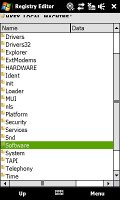


The Registry Editor is a useful application if you know what you are doing
Final words
The HTC MAX 4G is without doubt a high end device. Apart from the rather average camera, it pushes the limits of technology available on the market today. WiMAX is certainly a unique feature for a mobile phone and the huge 3.8" WVGA screen make it a very appealing offering.
What marks it down however is that the handset is only available for the Russian operator Yota. And even if you get hold of one outside of Russia, WiMAX is not that widespread yet, certainly not as much as 3G.
The HTC MAX 4G may be the highest of high end, but surprisingly that area is getting terribly overcrowded. Here we count at least five competitors that can measure up to the challenge of the 4G, each having some unique defining quality.
If you're searching for an alternative of the MAX 4G, the HTC Touch HD, is practically its 3G sibling. Sure it lacks the mind boggling maximum theoretical speeds, but the current networks are far from them anyway (both HSDPA and WiMAX). Plus 3G has worldwide reach. The HD also adds a decent 5 megapixel snapper, a 3.5 mm audio jack and has the notable advantage of 8GB of internal storage.
Next is the just released offering from Cupertino - Apple iPhone 3G S. The screen is no match for the size and pixel count of the MAX 4G, but the image quality on the iPhones has always been among the best. The camera is up a notch to 3 megapixel and autofocus but we'll have to wait and see how it fares in terms of actual photos.
Given the generous internal storage of either 16Gb or 32GB and the fact that it's got an Apple at the back (which alone is enough for some) and you've got quite a rival on your hands.
The Sony Ericsson Idou... er, we mean Satio is another contender for the title - its defining characteristic is the impressive, though no longer unique, 12 megapixel camera. It's got a xenon flash and aspires to be the be-all-end-all cameraphone and runs the touch version of the S60 platform. That of course has both its pros and cons so it's essentially up to you.
Another camera-centric touch Symbian device is the Samsung i8910 Omnia HD. While the still photo resolution is "just" 8MP, the Omnia HD distinguishes itself with 720p HD video recording - a first for GSM phones.
Last but certainly not least is the Toshiba TG01. It's got a monster of a screen at 4.1", which really pushes the limits of what we'd call a mobile phone. Its major treat is another monster - the 1GHz Snapdragon CPU. Since the TG01 runs WinMo, like the MAX 4G, Toshiba have decided to mask it away with a 3D user interface of their own.
Looks like quite a fight, doesn't it? The HTC MAX 4G sure has the speed to run for it. The screen makes browsing a bliss and surfing online over WiMAX should be zippier or at least easier on the wallet. If you have access to WiMAX, that is. The main issues with this otherwise great device are the narrow specialty (WiMAX instead of 3G) and the resulting steep price tag. It's a carrier's handset alright, and that has its downsides. But in the end, it's got the focus to cater to its niche and the attitude to outgrow it.
Reader comments
- bonann@hotmail.com
- 18 Feb 2010
- 0Em
Hi, i need some help if possible! i have an HTC Max 4G mobile , it is a brilliant gadget. I bought it when i was in Russia .... my Russian is not so good so i would like to convert it to english language - would you know what procedure i need to...
- ann
- 06 Jan 2010
- ivm
HTC is from Taiwan.....
- Buba
- 24 Dec 2009
- Pt5
HTC is a Taiwanese company. Samsung is Korean.

